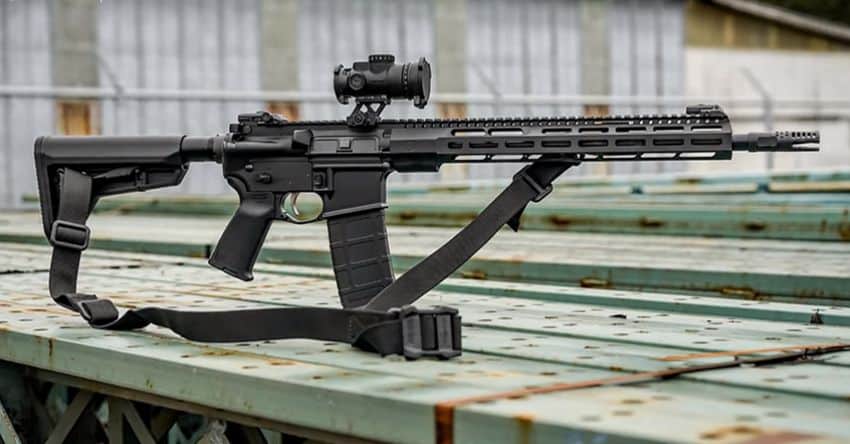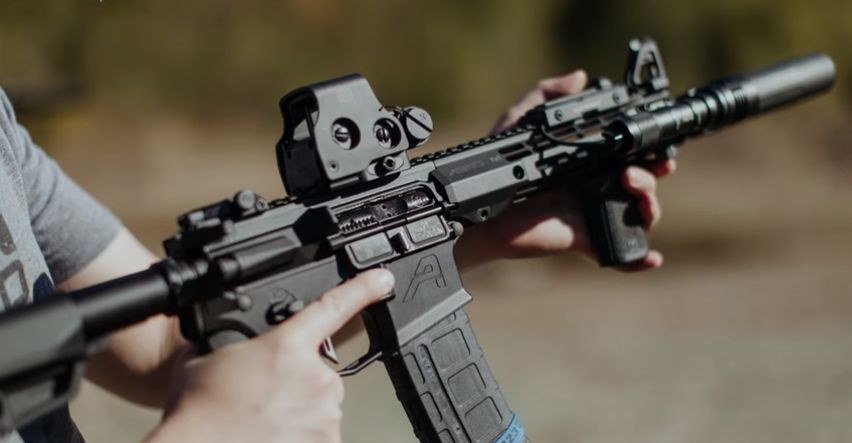Unveiling the Maximum Effective Range of an AR-15: An In-depth Exploration
If you’re a firearms enthusiast or just curious about the capabilities of the AR-15, you’ve likely wondered about its maximum effective range. The AR-15 is an iconic rifle, renowned for its versatility, accuracy, and widespread use. In this article, we delve into the intricacies of this remarkable firearm to determine its maximum effective range. So, without further ado, let’s unlock the secrets of the AR-15’s range capabilities.
Understanding the AR-15
Before we can determine the AR-15’s maximum effective range, it’s essential to understand the weapon itself. The AR-15, short for “ArmaLite Rifle,” was designed by engineer Eugene Stoner in the 1950s. It’s a lightweight, air-cooled, gas-operated semi-automatic rifle. With various configurations and chamberings available, it has become one of the most popular firearms in the United States.

Exploring the AR-15’s maximum effective range.
The Fundamentals of Range
The effective range of a firearm typically depends on several factors, including the caliber, bullet design, and most importantly, the proficiency of the shooter. Effective range is the distance at which a firearm can consistently hit a target with accuracy. In the case of the AR-15, this range can vary significantly depending on specific variables.
Caliber Matters
The AR-15 is available in various calibers, but the most common one is the .223 Remington or 5.56x45mm NATO. The caliber of a rifle plays a crucial role in determining its effective range. The .223/5.56 round is known for its relatively flat trajectory and excellent velocity, making it a popular choice for those who want precision at longer distances.
Barrel Length and Twist Rate
The AR-15’s barrel length and twist rate also contribute to its effective range. A longer barrel generally provides higher muzzle velocity, which can extend the effective range. Twist rate refers to the rifling inside the barrel, which stabilizes the bullet in flight. A twist rate that matches the chosen ammunition is crucial for accuracy.
Bullet Design
Bullet design is another critical factor. The AR-15 can be loaded with a wide variety of bullet types, from lightweight varmint rounds to heavy, long-range projectiles. The design and weight of the bullet greatly affect its ballistic performance, determining how it behaves in flight.
Environmental Conditions
Environmental factors such as wind, humidity, and temperature also influence the AR-15’s effective range. Wind, in particular, can have a significant impact on the bullet’s trajectory. Shooters must take these factors into account when determining their maximum effective range.
The Shooter’s Proficiency
The shooter’s skill level and experience are perhaps the most critical elements in determining the AR-15’s maximum effective range. Even with the most advanced rifle, a shooter must be proficient in marksmanship, including understanding ballistics, adjusting for environmental conditions, and managing recoil.

Exploring the AR-15’s effective shooting zone.
What Experts Say
While the effective range of an AR-15 can vary based on the factors mentioned above, experts generally agree that it is accurate and deadly at distances of up to 600 yards (approximately 550 meters). Some highly skilled marksmen have pushed the boundaries further, achieving hits at distances exceeding 1,000 yards. However, these feats require exceptional shooting skills and often custom-built rifles.
Factors Limiting the Range
It’s important to acknowledge the factors that limit the AR-15’s maximum effective range. First and foremost is the energy decay of the bullet. As the projectile travels, it loses velocity and energy. Beyond a certain point, it may no longer have sufficient energy to be effective against a target.
Beyond the Maximum Effective Range
While hitting a target beyond the maximum effective range of an AR-15 is possible, the odds of achieving accuracy decrease substantially. At greater distances, bullets may become less stable in flight, making them highly unpredictable. This is why, for most shooters, staying within the recommended effective range is crucial.
Read also: AR-15 Scope Mount with Iron Sights step by step guide
Conclusion
In conclusion, the maximum effective range of an AR-15 can vary based on multiple factors, including caliber, barrel length, twist rate, bullet design, environmental conditions, and the shooter’s skill. While experts generally agree on a range of up to 600 yards, exceptional marksmen have achieved hits at even greater distances. It’s important to note that achieving such long-range accuracy requires a deep understanding of the firearm, its ammunition, and the dynamics of shooting.
Remember, the AR-15 is a versatile and capable rifle, but its effectiveness greatly depends on the shooter’s proficiency and the specific conditions. Always prioritize safety and ethical shooting practices when handling any firearm.
Read also: Best Scope For AR 15 Coyote Hunting